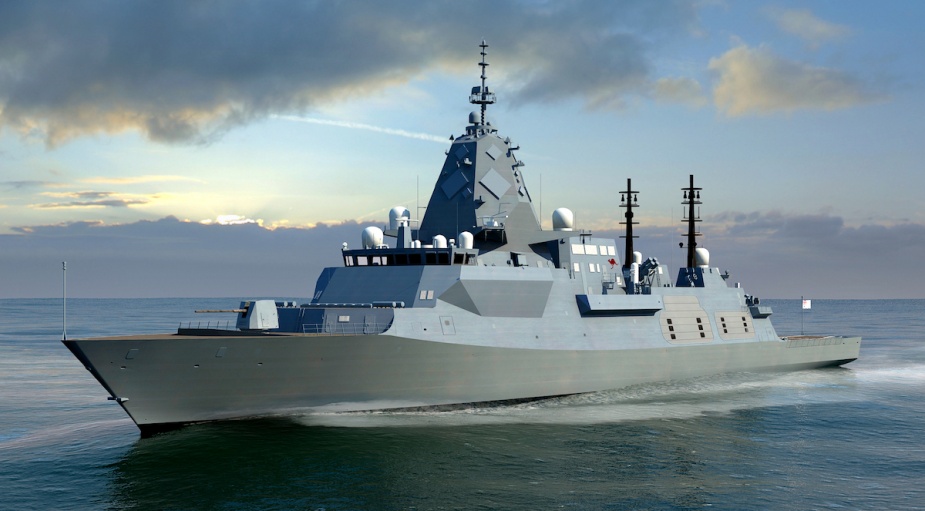
LONDON — BAE Systems has told USNI News that it would be “delighted” to enter its Type 26 Global Combat Ship in the FFG(X) future frigate competition – if the Navy scraps the requirement for a proven hull design.
The U.K. shipbuilder has taken a close interest in the small surface combatant program, prompting speculation that the United States might join Britain, Australia and Canada in acquiring versions of the Type 26 platform.
On Thursday, however, as the Navy released a final FFG(X) request for proposals, the company confirmed that it will not be submitting blueprints for the 492-foot, 8,000 -ton Type 26 unless the contest is opened up to designs that have not yet been proven at sea. Such a U-turn is not expected.
“Following a detailed assessment of the US Navy’s requirements for its FFG(X) frigate, program we chose not to participate and will continue to focus on delivering on our commitments to the U.K., Australian and Canadian navies,” a BAE Systems spokesperson said.
“We would be delighted to re-engage with the U.S. Navy should its requirements change.”
The Royal Navy is slated to receive eight City-class Type 26s optimized for anti-submarine warfare, with BAE Systems securing an order worth $4.7 billion (U.S. dollars) for the first three ships in July 2017.
Lead ship HMS Glasgow is now under construction in Scotland. Float-out is expected in late 2021, followed by fitting out, acceptance by the Royal Navy in 2025 and entry into operational service in 2027, according to information provided to Parliament.
Such a leisurely schedule – which has been dictated by funding constraints within the UK Ministry of Defence – means the ship has no chance of demonstrating its capabilities within the timeframe required by the U.S. Navy, which plans to select the FFG(X) detail design in Fiscal Year 2020.
Australia is buying up to nine modified Type 26s frigates, to be known as the Hunter class, and in February the Canadian government announced that it would acquire 15 Type 26s, with Lockheed Martin as prime contractor, in a through-life program worth about $45 billion.
Ottawa’s decision was engulfed in controversy when one of the losing bidders complained that the Type 26 failed to meet speed and other requirements imposed by the Royal Canadian Navy. Notably, critics accused procurement officials of reversing an earlier commitment to only consider proven vessel designs.
Asked if the U.S. Navy saw any advantages in procuring the same platform as Australia, Canada and Britain, Alan Baribeau, a spokesman for Naval Sea Systems Command, told USNI News, “the Navy sees benefit of a competitively awarded design that meets cost, schedule and technical requirements of the FFG(X) program.”
“To promote and provide for full and open competition, the Navy will consider any hull form — foreign and domestic — that meets the requirements, will be built in a U.S. shipyard and has a parent design that has been through production and demonstrated (full scale) at sea,” Baribeau continued.
“As part of the program, the Navy has specified what combat system elements will be required on FFG(X) to maximize capability, interoperability and commonality, and to reduce development, integration, support and future modernizations costs.”
Baribeau confirmed that the FFG(X) Program Office had discussed the Type 26 design with BAE Systems, and that the company participated in an industry day in 2017.
“If the Type 26 can meet the requirements in the FFG(X) Request for Proposal, they [BAE Systems] can submit a bid that will be evaluated as a part of the competition,” he added.
Four companies are expected to submit bids – Austal USA, Fincantieri Marine, General Dynamics Bath Iron Works and Ingalls Shipbuilding – with deadlines of August 22 for technical proposals and September 26 for pricing proposals.





